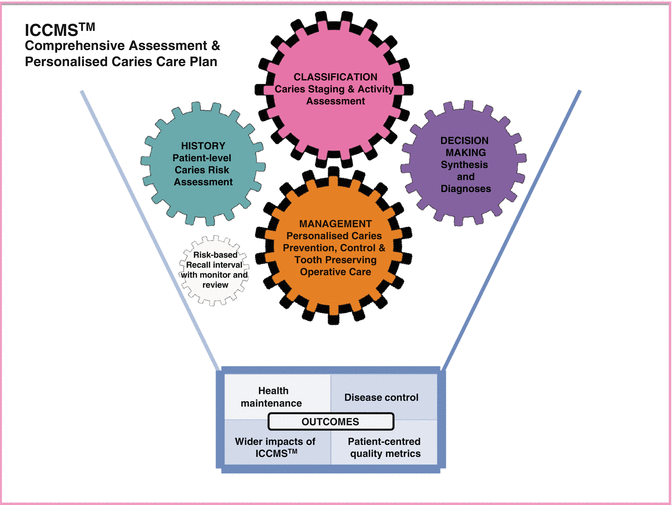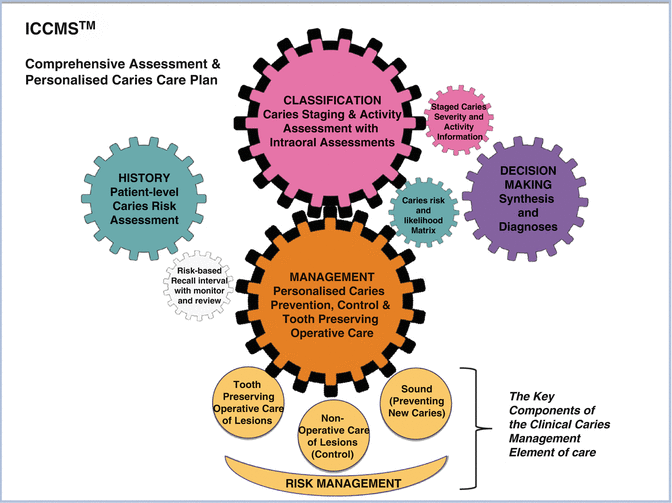Fig. 1.1
Interrelationships and definitions of ICDAS and ICCMS and GCCM
The best evidence for deciding which treatment is appropriate and when has been assembled by a group of 75 international academics and practitioners in a cyclical format with four main elements which together lead to beneficial patient outcomes (see Fig. 1.2). These elements are:


Fig. 1.2
ICCMS™: Overview of the comprehensive assessment and personalised caries care plan
1.
HISTORY – which provides a patient-level caries risk assessment
2.
CLASSIFICATION – caries staging and activity assessment
3.
DECISION-MAKING – both synthesis and diagnoses
4.
MANAGEMENT – personalised caries prevention, control and tooth-preserving operative care
Leading to OUTCOMES assessed in the domains of health maintenance, disease control, patient-centred quality metrics and wider impacts on systems and society.
Important features of the ICCMSTM are that it is risk based. For some years there have been groups advocating the CAMBRA philosophy (Caries Management by Risk Assessment), and in terms of planning appropriate recall strategies for patients, the UK National Health Service’s National Institute for Clinical Excellence (NICE) convened a guideline development group to look at the evidence in this area. They recommended that for dental recall, the interval between routine dental examinations should be personalised and risk based (NICE 2004). For caries management this means monitoring and review is required.
Figure 1.3 shows the key components of the clinical caries management element of care. These are all underpinned by risk management strategies and comprise (a) preventing new caries for sound surfaces; (b) nonoperative care of lesions, that is, caries control using remineralisation strategies including fluorides and newer methods; and (c) as a last resort – tooth-preserving operative care of lesions that cannot be arrested or reversed or are to extensive when a patient is first seen.


Fig. 1.3
ICCMS™ – Detail showing the key components of the clinical caries management element of care
References
Alliance for a Cavity Free Future – ACFF. http://www.allianceforacavityfreefuture.org/.
Fisher J, Glick M. A new model for caries classification and management: the FDI World Dental Federation Caries Matrix. JADA. 2012;143:546–51.PubMed
Fontana M, et al. Development of a core curriculum in cariology for US Dental Schools. J Am Dental Educ Assoc. 2016 (in press).
Ismail AI, Sohn W, Tellez M, Amaya A, Sen A, Hasson H, Pitts NB. The International Caries Detection and Assessment System (ICDAS): an integrated system for measuring dental caries. Community Dent Oral Epidemiol. 2007;35:170–8.CrossRefPubMed
Stay updated, free dental videos. Join our Telegram channel

VIDEdental - Online dental courses


